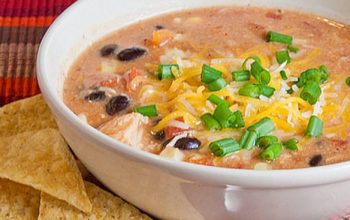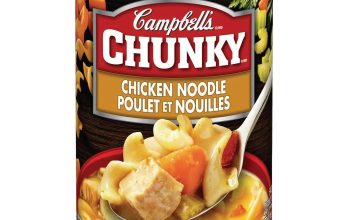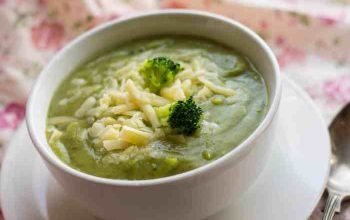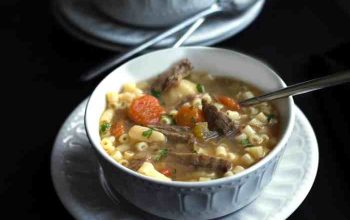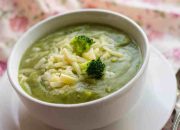A Deep Dive into Beer Soup Recipes
Beer soup recipes – Beer soup, a surprisingly diverse culinary tradition, offers a comforting and flavorful experience that transcends geographical boundaries. This exploration delves into the history, variations, and techniques involved in crafting this unique dish, highlighting its cultural significance and the artistry behind its preparation.
Introduction to Beer Soup Recipes
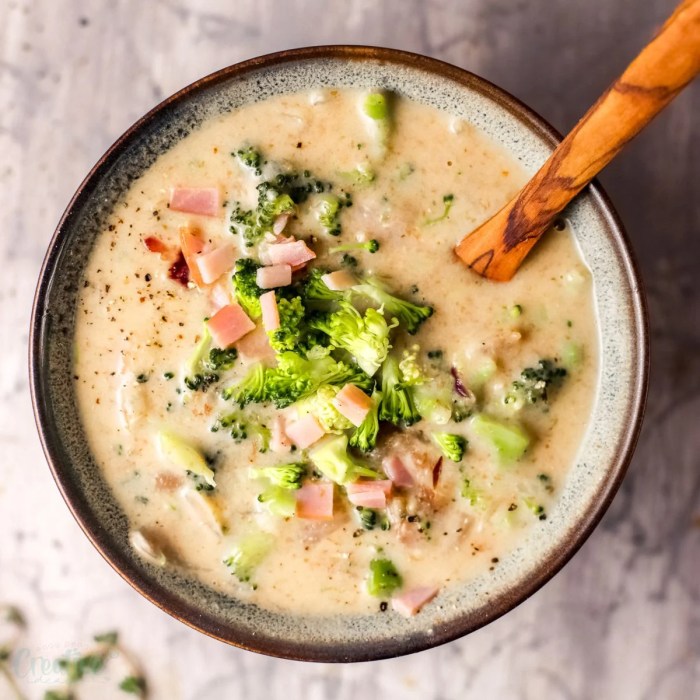
Source: theseamanmom.com
The origins of beer soup are difficult to pinpoint precisely, as the use of beer in cooking dates back centuries. However, it’s likely that beer’s incorporation into soups emerged organically in regions where beer production was prevalent, offering a convenient way to utilize leftover or less potent brews. The cultural significance of beer varies widely. In some regions, it’s deeply intertwined with local festivities and traditions, with beer soups often featured during celebrations or special occasions.
In others, it’s simply a practical ingredient that adds depth and complexity to hearty winter stews.
The type of beer employed significantly impacts the final flavor profile. Darker beers, such as stouts or porters, contribute rich, roasted notes and a robust body. Lighter beers, like lagers or pilsners, provide a crispness and subtle maltiness. The beer’s bitterness, sweetness, and alcohol content all play a crucial role in shaping the overall taste of the soup.
Types of Beer Soups
Beer soups are categorized primarily by their main ingredients. Vegetable beer soups, for instance, emphasize seasonal produce and the beer’s subtle maltiness. Meat-based beer soups, often featuring beef or pork, leverage the beer’s ability to tenderize and enhance the meat’s flavor. Seafood beer soups, less common but equally delightful, showcase the beer’s pairing potential with shellfish or fish.
| Region | Soup Name | Beer Type | Main Ingredients |
|---|---|---|---|
| Germany | Schweinshaxe Eintopf | Dunkel | Pork knuckle, potatoes, carrots, onions |
| Belgium | Vlaamse Stoverij | Flanders Red Ale | Beef, onions, carrots, potatoes, beer |
| Ireland | Irish Stew with Beer | Stout | Lamb, potatoes, carrots, onions, barley |
| United States | Beer Cheese Soup | IPA or Pale Ale | Cheese, beer, onions, potatoes, cream |
The flavor profiles vary greatly depending on the beer and other ingredients. A stout-based soup will have a richer, more intense flavor than a lighter lager-based soup. The addition of vegetables, meats, or seafood further modifies the overall taste experience, creating a spectrum of flavor profiles from subtly malty to intensely savory.
Beer soup recipes often incorporate hearty meats for depth of flavor. A common variation involves the addition of sausage, similar to many popular soup recipes with sausage , which often feature rich broths and various vegetables. The resulting combination in beer soups creates a satisfying and flavorful culinary experience, particularly when paired with crusty bread.
Beer Soup Recipe Ingredients
A wide array of ingredients contributes to the complexity and deliciousness of beer soups. The careful selection and balance of these components are key to achieving a well-rounded flavor profile.
- Vegetables: Potatoes, carrots, onions, celery, leeks, mushrooms, peas, green beans
- Meats: Beef, pork, lamb, chicken, sausage
- Seafood: Mussels, clams, shrimp, salmon
- Spices and Herbs: Thyme, rosemary, bay leaf, marjoram, black pepper, salt
- Beer: Stouts, porters, lagers, ales, IPAs (depending on the desired flavor profile)
- Other: Broth, cream, butter, flour (for thickening)
Each ingredient plays a specific role. Vegetables add sweetness and texture, while meats provide heartiness and protein. Spices and herbs enhance the overall flavor complexity, and the beer forms the backbone of the soup, imparting its unique characteristics. Substitutions are possible depending on dietary needs or preferences. For instance, vegetable broth can replace beef broth, and different types of beer can be used to achieve varying flavor profiles.
Gluten-free beer is readily available for those with celiac disease.
Beer Soup Recipe Techniques and Methods, Beer soup recipes
Several cooking methods can be employed to prepare beer soups, each impacting the final texture and flavor. Simmering allows for gentle cooking, preserving the integrity of the ingredients, while braising tenderizes tougher cuts of meat. Slow cooking enhances the flavors by allowing them to meld over a longer period.
Proper beer selection and incorporation are crucial. Adding the beer too early can cause the alcohol to evaporate, diminishing its flavor impact. The optimal time to add beer often depends on the recipe and the type of beer used. Some recipes call for adding the beer at the beginning of the cooking process, while others prefer adding it towards the end to retain more of its flavor and aroma.
A basic beer soup recipe might involve sautéing onions and carrots, adding meat (if used), then incorporating broth and beer. Simmer until the meat is tender, then add potatoes and other vegetables. Season to taste and finish with a touch of cream or butter for richness.
Variations and Adaptations of Beer Soup Recipes
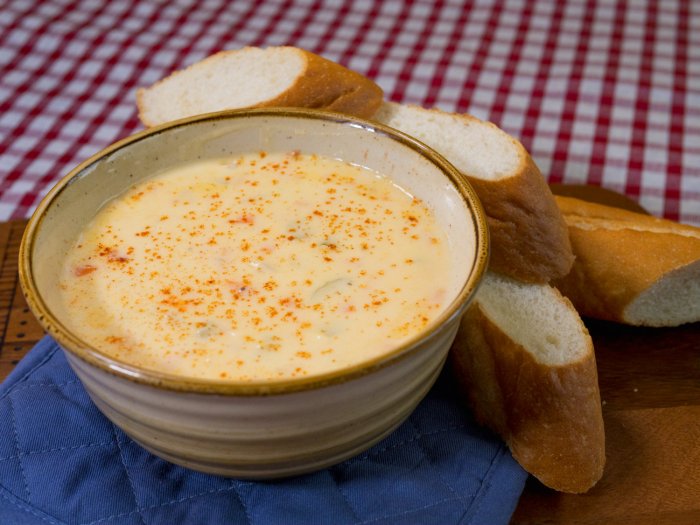
Source: cloudfront.net
The beauty of beer soup lies in its adaptability. Classic recipes can be easily tweaked to incorporate unique ingredients and flavors. Adding unusual ingredients, such as smoked paprika, chorizo, or different types of mushrooms, can create surprising and delicious variations.
For example, a hearty Autumnal Beer Soup could combine pumpkin puree, roasted butternut squash, and a dark, malty beer like a brown ale. The earthy sweetness of the squash would complement the beer’s roasted notes, creating a rich and satisfying autumnal flavor.
Serving and Presentation of Beer Soup
Serving beer soup is an opportunity to elevate the dining experience. Garnishes can significantly enhance both the visual appeal and the flavor profile. A simple sprinkle of fresh herbs, a dollop of crème fraîche, or a drizzle of good quality olive oil can make a noticeable difference.
Imagine a rustic bowl filled with a rich, dark amber-colored beer soup. Tender chunks of beef are visible, nestled amongst softened carrots and potatoes. A swirl of creamy texture contrasts with the hearty vegetables, and a sprinkle of fresh parsley adds a pop of vibrant green. The steam rising from the soup creates a warm and inviting atmosphere.
Beer Soup and Food Pairing
Pairing beer soups with complementary dishes can further enhance the overall taste experience. The principles of successful food and beer pairing involve considering the intensity of flavors, balancing bitterness and sweetness, and complementing textures.
| Soup Type | Pairing Suggestion | Rationale | Preparation Method for Pairing |
|---|---|---|---|
| Beef Beer Soup | Roasted root vegetables | Earthy sweetness complements the savory soup | Roast vegetables with herbs and olive oil |
| Seafood Beer Soup | Grilled sourdough bread | Crusty bread soaks up the broth | Grill or toast slices of sourdough bread |
| Vegetable Beer Soup | Arugula salad | Peppery arugula contrasts the rich soup | Toss arugula with lemon juice and olive oil |
Helpful Answers: Beer Soup Recipes
Can I use any type of beer in a beer soup recipe?
While many beers work, the best choice depends on the soup’s other ingredients. Lighter beers are better for delicate soups, while bolder stouts complement richer ones. Avoid overly hoppy beers unless the bitterness complements the other flavors.
How long can I store leftover beer soup?
Leftover beer soup should be stored in an airtight container in the refrigerator for up to 3-4 days. Always allow it to cool completely before refrigeration.
What if I don’t have all the ingredients listed in a recipe?
Don’t fret! Many ingredients can be substituted. Use your culinary judgment; if something seems like a reasonable swap, give it a try. Experimentation is part of the fun!
Is beer soup always alcoholic?
The alcohol content in beer soup significantly reduces during the cooking process. While some alcohol might remain, it’s usually negligible. However, if you prefer a completely alcohol-free version, you can substitute the beer with a non-alcoholic beer or even broth.

